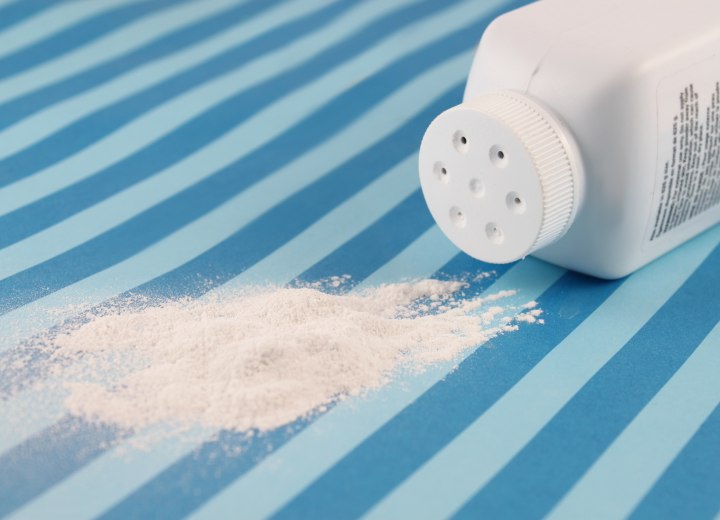Talcum Powder against Greasy Hair

A: I don’t call the use of talcum powder a “solution” to greasy hair, but it can be used as a stop-gap measure between shampoos. The talc is used to absorb excess oils from the hair at the scalp area and thus reduce the “greasy” look that some people get between shampoos.
To use the talcum powder properly, you need to make sure the hair is dry. Use a clean, dry towel and a hair dryer to blot away, and dry any sweat or moisture on the hair at the scalp. Once you know the hair is free of moisture (not just oils) use a Natural Bristle brush and brush the hair segment by segment, until you’ve covered the whole scalp.
It’s important that the brush has NATURAL FIBER bristles – not synthetic ones. The natural fiber bristles are gentler on the hair and help to manually clean the hair and redistribute the oils in the hair.
Take a segment of hair at the parting line (if any) or begin at the forward edge of the scalp. Brush through the segment with gentle pressure at the scalp to remove any dust and debris, and to help draw any oils down along the hair strand to distribute them.
Next, sprinkle a small amount of talc onto the brush bristles of a make-up brush (such as a large blusher brush). You may use a soft terry-fabric cloth and a small amount of talc if necessary. This will distribute the talc evenly and help prevent clumps, which is the ultimate goal.
Allow the talc to sit on the hair for a few moments, and then brush through the hair a second time to remove the powder (as much as possible). This is not a step that can be repeated multiple days in a row, as the powder will build-up forming waxy, cakey clumps along the scalp, and can clog the pores of the skin inside the hairline, and could even clog the follicles and result in problems as a result.
You’ll want to shampoo the hair and scalp as soon as you can do so. This is especially true of those individuals with sensitive and acne-prone skin.
©Hairfinder.com
See also:
Causes and solutions for oily hair
Solutions for hair that looks oily near the scalp
Are people with long hair more prone to having oily hair?
What are good hairstyles to hide oily hair?